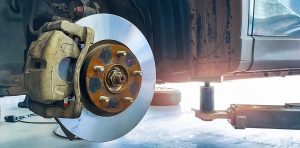Understanding the Different Types of Car Hoses and Their Functions in Commercial Vehicles
For best results, commercial vehicles like trucks, buses, and vans need a variety of hoses. Both vehicle operators and service providers must be aware of the kinds, purposes, and maintenance needs of these hoses. An overview of the many hose types used in commercial vehicles is given in this book, along with information on their crucial functions in maintaining efficiency and safety.
Hoses for Coolants
Engine temperature control is mostly dependent on coolant hoses. The three main varieties are the bypass hose, lower radiator hose, and upper radiator hose. While the lower radiator line returns cooled fluid to the engine, the upper radiator hose transfers hot coolant from the engine to the radiator. In order to maintain a constant temperature throughout the engine warm-up period, the bypass line circulates coolant. These hoses need to be regularly inspected for leaks, cracks, or bulges in order to remain functioning. In addition, it’s a good idea to replace hoses that exhibit wear, usually every four to five years or as advised by the manufacturer.
Hoses for Brakes
The proper operation of the braking system depends heavily on the brake hoses. They are made up of metal brake lines and flexible brake hoses. These hoses make it easier for brake fluid to go from the master cylinder to the brake drums or calipers, allowing the car to stop. To guarantee safe operation, they must be routinely checked for wear, cracks, or leaks, and connections must be maintained free of corrosion. Brake hose integrity must always be maintained by Auto Repair in Redding, CA based service since any breakage might result in reduced stopping power.
Hoses for Air Intakes
Air intake hoses are essential to the combustion process because they carry clean air from the air cleaner to the engine. The air cleaner to throttle body hose and intercooler hoses are examples of the common varieties. It’s crucial to check these hoses for cracks or loose couplings, and maintaining clean air filters can ease the strain on the hoses. Maintaining enough airflow promotes long-term and effective engine performance.
Hoses for power steering
The hydraulic steering system requires power steering hoses. They are made up of return and high-pressure hoses that transfer hydraulic fluid from the power steering pump to the steering gear. Steering problems may be avoided by regular leak checks, particularly around fittings, and replacements when brittleness or wear is seen. For a car to operate safely, the power steering system must be kept in good working order.
Hoses for Washer and Wiper
In bad weather, wiper and washer hoses are essential for maintaining visibility. These hoses transfer washer fluid to the spray nozzles and windshield wipers from the reservoir. Maintaining safe connections and performing routine inspections for leaks or obstructions are crucial maintenance procedures. Maintaining these hoses’ optimal condition increases driver sight in all weather conditions, which improves safety.




